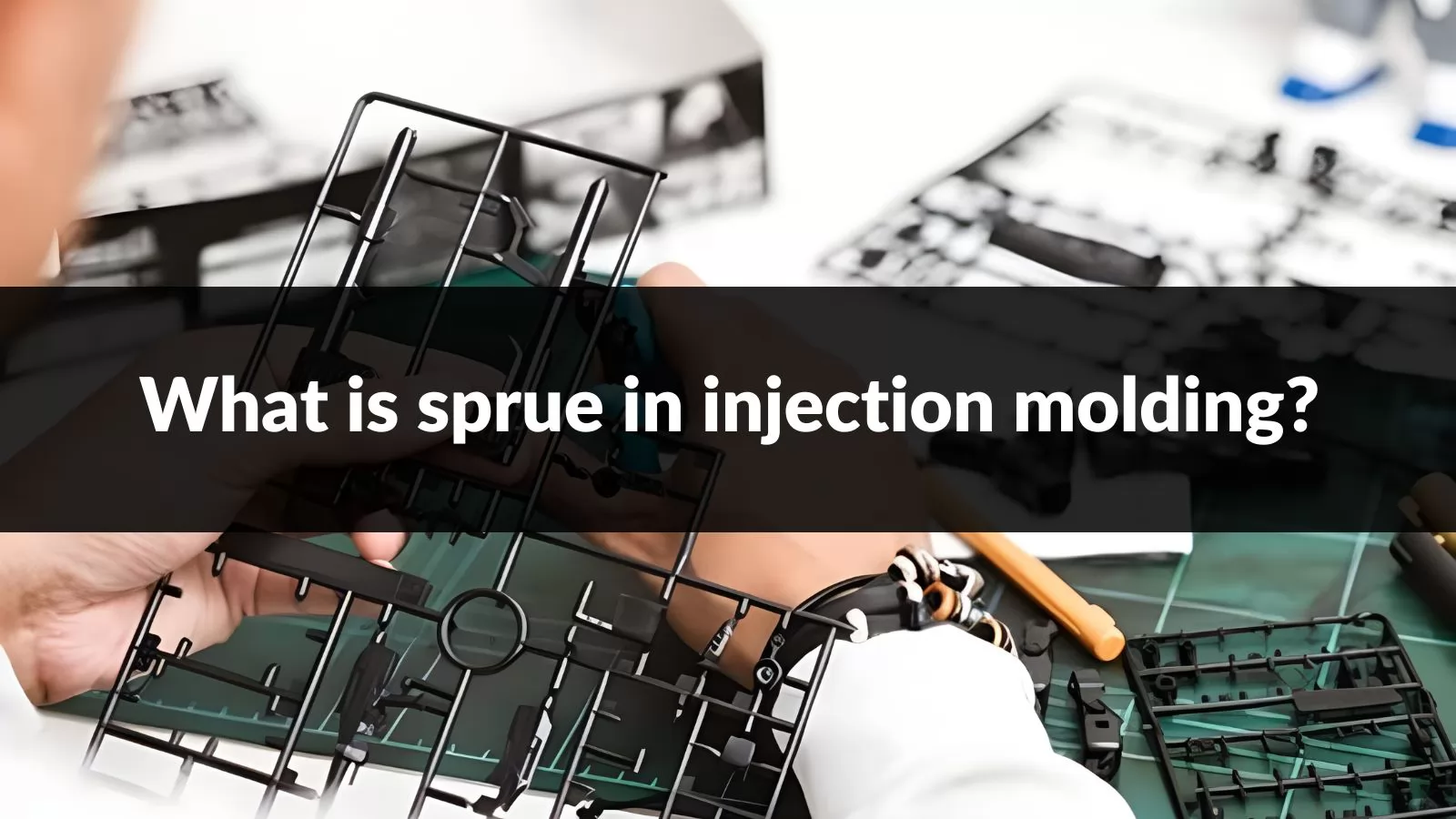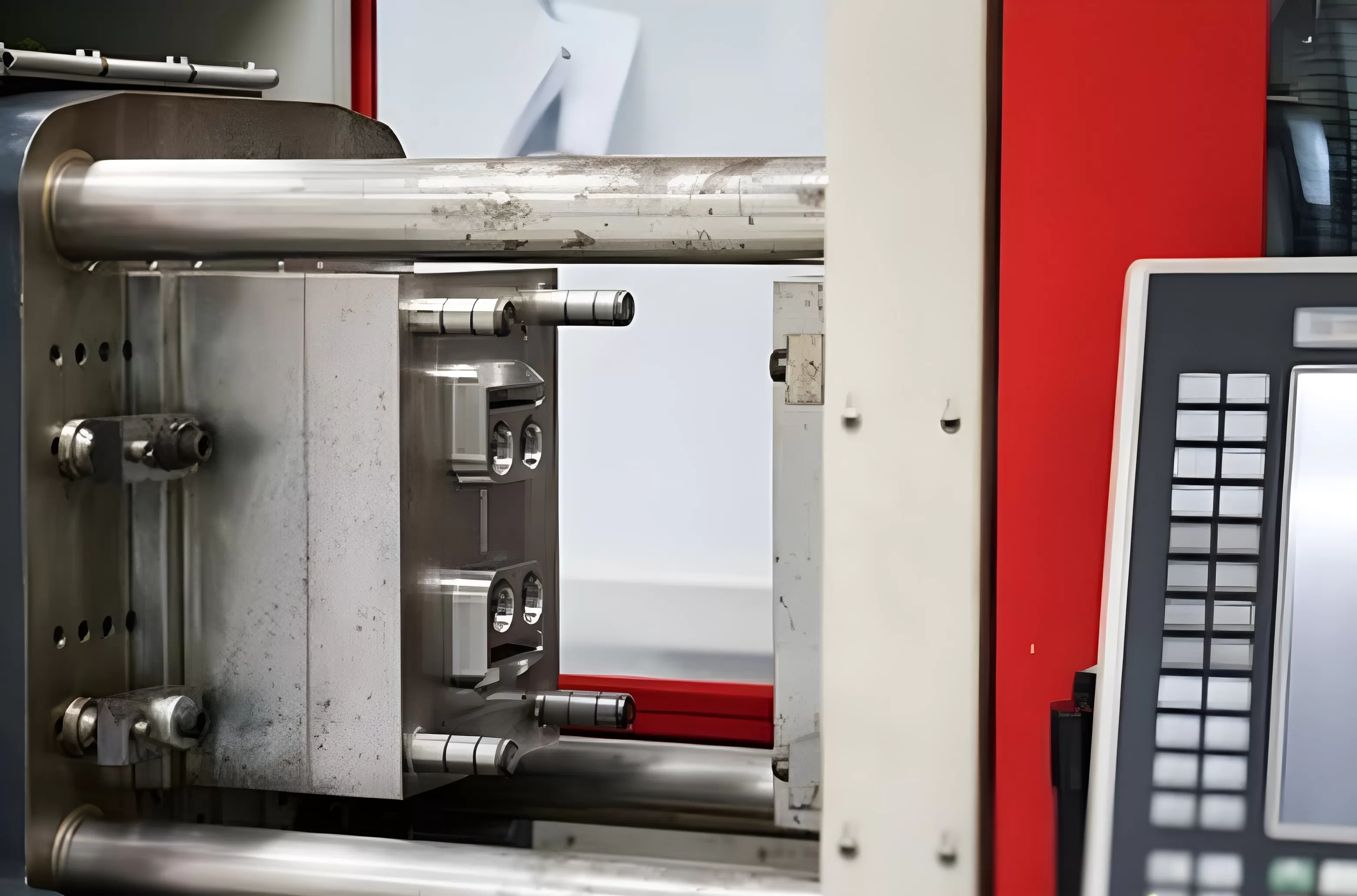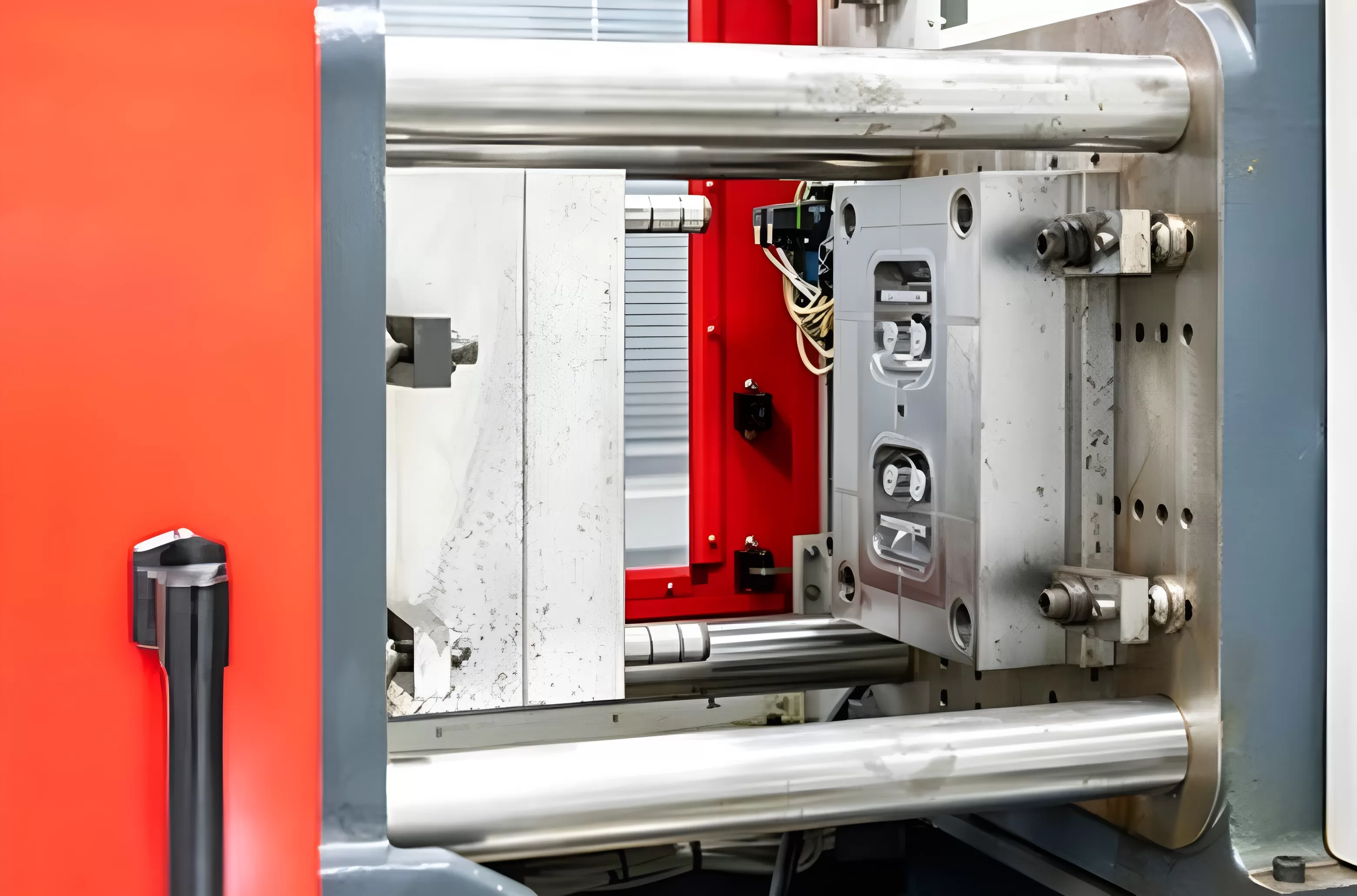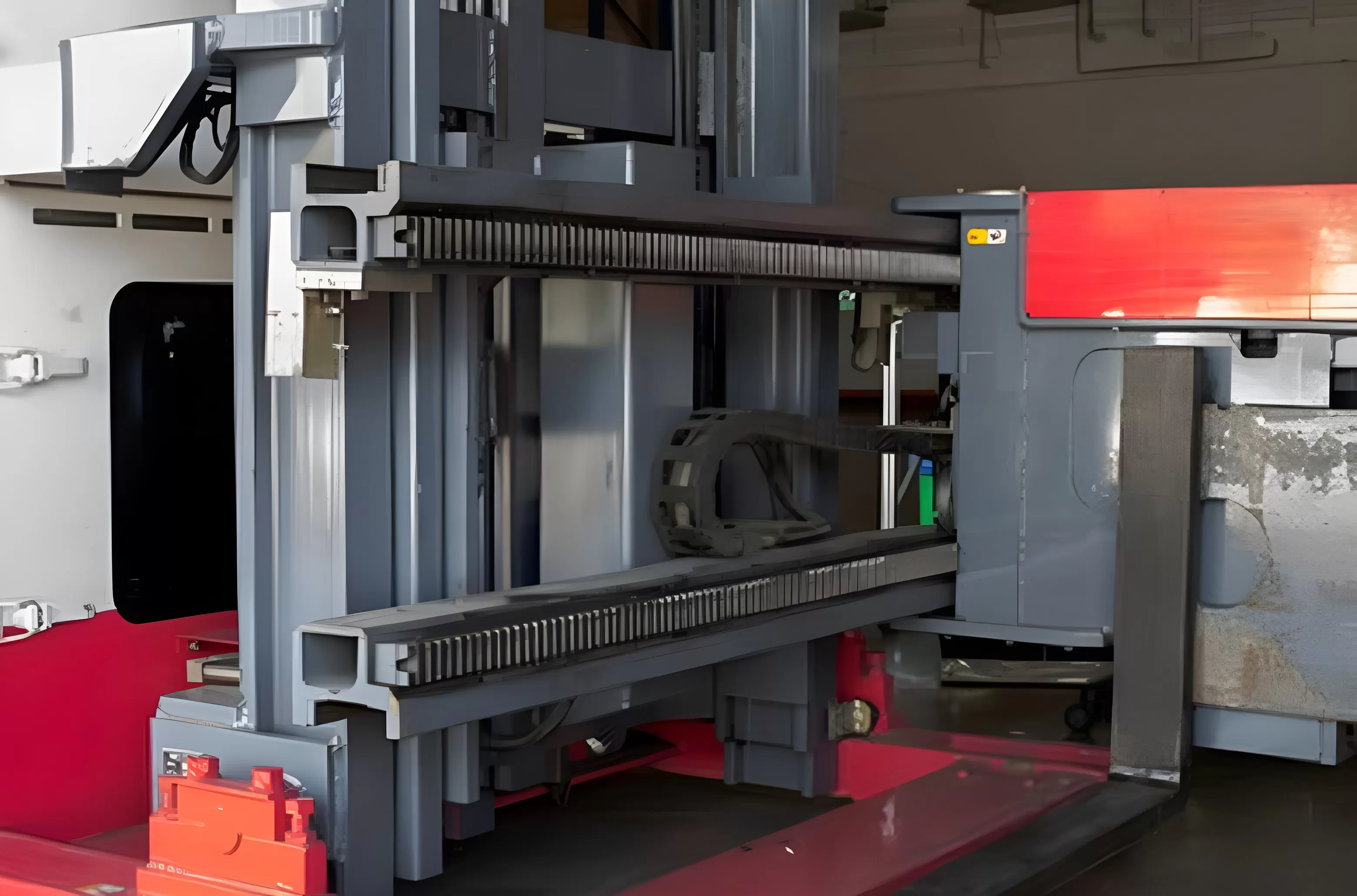
Sprue in injection molding refers to the primary channel through which molten plastic is injected into a mold. It serves as the passage connecting the injection molding machine’s nozzle to the runners and subsequently to the part cavities.
Understanding how sprues influence the quality and efficiency of injection molded components is crucial for optimizing production processes. Learn about sprue design, function, and impact on your molding operations as we delve deeper into this fundamental aspect of plastic manufacturing.

What is a Sprue?
A sprue in injection molding refers to the primary channel through which molten plastic flows from the injection molding machine’s nozzle into the mold itself. The design of the sprue is fundamental as it affects the flow and pressure of the material entering the mold. A well-designed sprue ensures proper material delivery, uniform filling of the mold cavities, and plays a critical role in determining product quality while minimizing waste and defects.
The sprue usually takes on a cylindrical shape but can be tapered or have other profiles depending on specific mold requirements. The size of a sprue must be calculated accurately; if too large, it will use an excessive amount of material and may cool too slowly. Conversely, if too small, there could be increased resistance to flow, which might cause imperfections in molded parts due to inadequate filling.
Why Is Sprue Location Important?
In injection molding, the location of the sprue is a significant aspect that impacts the flow of molten material into the mold cavity and plays a crucial role in product quality. A strategically placed sprue ensures uniform flow and pressure throughout the entire cavity, which is vital to produce parts with consistent wall thicknesses and minimal defects.
Choosing an inappropriate location for the sprue can lead to various issues such as weld lines, improper filling, air traps, increased stress concentrations at certain points, and potential aesthetic flaws on the surface of the molded part. Poor sprue placement might also cause variations in cooling time across the part, influencing both cycle times and the physical properties of the final product.
Optimal sprue location enhances process efficiency by potentially reducing cycle times and energy consumption. It helps in achieving optimal gate positioning where it minimizes shear stress while ensuring adequate feeding of all areas within the mold. This optimization contributes to extending tool life by imposing less wear on molds due to more balanced pressure distribution.
Additionally, placing a sprue correctly can aid in reducing material usage. By minimizing feed distances or facilitating better packing phases during processing, material waste due to long runners or excess packing is decreased. Consequently, such an approach not only improves sustainability but also saves on raw materials costs.


Design of Sprues
The design of sprues is a critical component in the injection molding process, serving as the primary channel through which the molten plastic flows from the injection molding machine into the mold cavities. An optimally designed sprue minimizes material waste and ensures consistent quality in the molded parts. The sprue’s diameter must be sufficient to allow for an uninterrupted flow of material, avoiding premature cooling that could lead to defects or incomplete fills.
Sprue length is equally essential; it should be short enough to minimize pressure loss but long enough to allow for thermal separation between the processed material and the unmelted pellet mass at the feed zone. Additionally, attention must be paid to the shape of the sprue—tapered designs are often used as they reduce stress on the part during ejection while also helping to ease material flow.
Surface finish within the sprue should facilitate smooth movement of material with minimal drag resistance. A polished internal surface can reduce friction and allow for more efficient flow. In terms of configuration, sprues may feed directly into a single cavity or split into multiple runners that distribute plastic to several cavities simultaneously.
Applying these considerations in designing sprues will enhance overall production efficiency, minimize cycle times, and improve part quality by reducing potential defects associated with poor material flow.
Summary Table
| Aspect | Consideration |
|---|---|
| Diameter | Sufficient size for uninterrupted flow and avoidance of premature cooling |
| Length | Balanced between minimizing pressure loss and allowing thermal separation |
| Shape | Tapered design recommended to ease ejection and improve material flow |
| Surface Finish | Polished internal surface reduces friction and promotes efficient flow |
| Configuration | Can either feed directly into a single cavity or split into runners for distributing plastic to multiple cavities |
Material of Sprues
The materials used for sprues are generally identical to those used for the molded part itself, given that they form an integral part of the injected material before being separated after cooling.
Common plastics used in creating both sprues and parts include polyethylene (PE), polypropylene (PP), polystyrene (PS), and acrylonitrile butadiene styrene (ABS). These thermoplastics are favored for their flow properties, durability, and cost-effectiveness. Engineers may also use more specialized materials like nylon, polycarbonate (PC), polyether ether ketone (PEEK), or thermoplastic rubbers depending on the requirements of strength, flexibility, transparency, or resistance to heat and chemicals.
Moreover, some applications might call for added fillers or additives in the material to enhance certain characteristics like toughness or flame resistance. For instance, fiberglass or mineral fillers can be incorporated into the base resin to improve structural integrity or thermal stability. It is essential that these adjunct materials equally do not interfere with the flow and solidification process within the sprue system.
| Property | Common Materials | Specialized Materials | Additives/Fillers |
|---|---|---|---|
| Flow Properties | PE, PP | Polycarbonate (PC) | - |
| Durability | ABS | Polyether ether ketone(PEEK) | Fiberglass |
| Cost-Effectiveness | PS | Thermoplastic rubbers | Mineral Fillers |
| Flexibility | Thermoplastic rubbers | - | - |
| Transparency | Polycarbonate (PC) | - | - |
| Heat Resistance | - | Polyether ether ketone(PEEK) | Fiberglass |
| Chemical Resistance | - | Nylon | - |
| Strength Enhancement | - | - | Mineral Fillers |
| Flame Resistance | - | - | Flame retardant Additives |
Sprues and Recycling
In the context of injection molding, sprue recycling is a vital consideration for reducing waste and optimizing resource use. After an injection molding cycle, the sprue — being the primary channel through which molten material flows into the mold — solidifies into plastic that is often still usable. Facilities tend to grind these runners and sprues into regrind material which can then be reintroduced into the manufacturing process, depending on quality standards and material compatibility. This practice indeed assists not only in minimizing environmental impact by decreasing landfill waste but also helps in cost reduction by reusing materials within production cycles.


Hot Runners
In injection molding, hot runners are an essential system for directing molten plastic from the machine nozzle into the various cavities of a mold. Unlike traditional cold runner systems that cool and solidify the material in the channels alongside the molded parts, hot runners keep the plastic in a fluid state as it flows through the system. This is achieved by a series of heated components, including manifolds and nozzles that maintain a consistent temperature throughout the pathway.
The primary advantage of using hot runners is the reduction in waste material since there’s no hardened runner to discard after each cycle. Additionally, they can improve cycle times due to not having to cool and then reheat the runners during each injection process. This can lead to more efficient production with quicker turnaround times and lower operational costs over time.
Hot runners are complex systems that require precise control over temperature and pressure. The technology allows for better control of flow rates and reduces stress on the molded parts by providing more uniform heat distribution. This results in higher quality products with fewer defects such as warping or shrinkage.
Specific types of hot runner systems include open gate hot runners where the molten plastic flows directly into the cavity, and valve gated hot runners which employ mechanisms to open and close gates at specific times, enabling better control over material flow and reducing drool or stringing.
Hot Sprue Bushings
Hot sprue bushings are a vital component in the injection molding process, particularly when it comes to improving efficiency and reducing waste. These bushings function by directly transferring the molten material from the injection molding machine’s nozzle to the mold cavity, effectively eliminating the traditional cold sprue that would solidify between cycles. By maintaining the temperature of the plastic within the bushing, hot sprue bushings ensure that the material remains fluid until it enters the cavity, thus minimizing material waste and cycle time.
These bushings come equipped with their own heating element, which is crucial for maintaining control over the processing temperature of different thermoplastic materials. Temperature control is key in preventing premature cooling and potential defects in the molded part. Furthermore, their compatibility with various gating systems allows for flexibility in mold design and can accommodate single or multi-cavity molds.
Additionally, hot sprue bushings provide a direct gate into the part, which can result in better surface finish and part quality. Since there is no cold runner system generating scrap with each cycle, these bushings contribute to an overall savings on materials costs and lessen environmental impact related to scrap disposal and recycling processes. When it comes to optimizing production by reducing cycle times and material consumption while enhancing product quality, hot sprue bushings emerge as an invaluable tool.


Types of Sprues Used in Molds
The type of sprue used in injection molding is primarily determined by the specific application and requirements of the molded product. Two main categories underlie sprue design: cold sprues and hot sprues. Cold sprues are simple, straight channels that extend from the injection molding machine nozzle to the runners or directly into the mold cavity. They are commonly used due to their simplicity and cost-effectiveness but result in greater amounts of wasted material since the material within the sprue solidifies and must be removed from each cycle.
On the other hand, hot sprues are heated sections that keep the plastic molten inside the sprue. They are a component of hot runner systems which enable better control over flow and help reduce waste as there is no solidified plastic to discard after molding. Hot runner systems include various designs, such as insulated runners, valve gated, and internally heated.
| Sprue Type | Description | Advantages | Disadvantages |
|---|---|---|---|
| Cold Sprue | A straight unheated channel connecting machine nozzle to mold | Simple design; cost-effective | Increased waste due to solidified material in sprue |
| Hot Sprue | A heated channel keeping plastic molten inside it | Reduces waste; improved control over resin flow | Higher initial setup cost; more complex maintenance |
What Sprue is Right for You?
Choosing the appropriate sprue for your injection molding project is a matter of analyzing the specific requirements of your mold design and the properties you expect in the final product. Consideration should be given to factors such as the type and thickness of the material being molded, gate location, cycle time, and pressure drops. The sprue functions to channel molten plastic into a mold’s runner system; hence it must be designed to ensure smooth flow and minimal cooling of material during this process.
Cold sprues are commonly used due to their simplicity and cost-effectiveness. They are especially suitable for simpler molds where heat loss is not a significant concern. On the other hand, hot sprues might be preferred when working with more complex molds or materials that are sensitive to temperature changes, since they maintain a consistent temperature throughout the cycle, reducing stress on the material.
The diameter and length of a sprue also play a vital role in determining its suitability. A poorly sized sprue can lead to inadequacies such as short shots or excessive residual stress within the component. Moreover, surface finish considerations should not be overlooked; different types of polished or textured surfaces on a sprue may impact both flow and ejection characteristics.
Ultimately, an optimal choice balances functionality with economic viability. Collaborate closely with mold designers and material suppliers to ensure that your selection aligns with all technical constraints while keeping production costs under control.
| Factor | Considerations for Sprue Selection |
|---|---|
| Material Type | - Ensure compatibility with mold materials |
| - Choose hot/cold sprues based on sensitivity to temperature | |
| Mold Design | - Compatibility with simple or complex mold layouts |
| Cycle Time & Pressure Drops | - Minimize using efficient flow design |
| Sprue Size (Diameter & Length) | - Calculation based on part size and material flow requirements |
| Surface Finish | - Determine impact on material flow and release from mold |
| Cost-Efficiency | - Balance between performance requirements and budget constraints |
In conclusion
Sprue in injection molding refers to the primary feed channel that directs molten plastic from the nozzle of the molding machine into the mold cavity, playing a crucial role in the manufacturing process by influencing material flow and quality of the final product.
To learn more about how optimizing sprue design can enhance your injection molding operations and improve product quality, contact us for insights and support. Explore our range of services to ensure your molding processes are efficient, cost-effective, and deliver the highest standard of precision.


